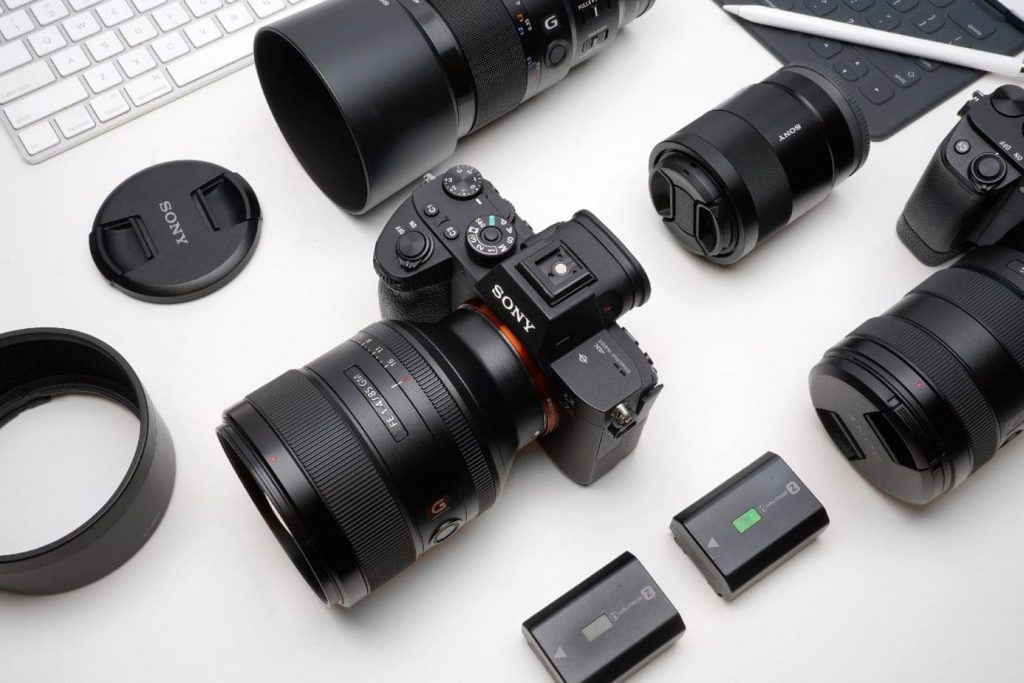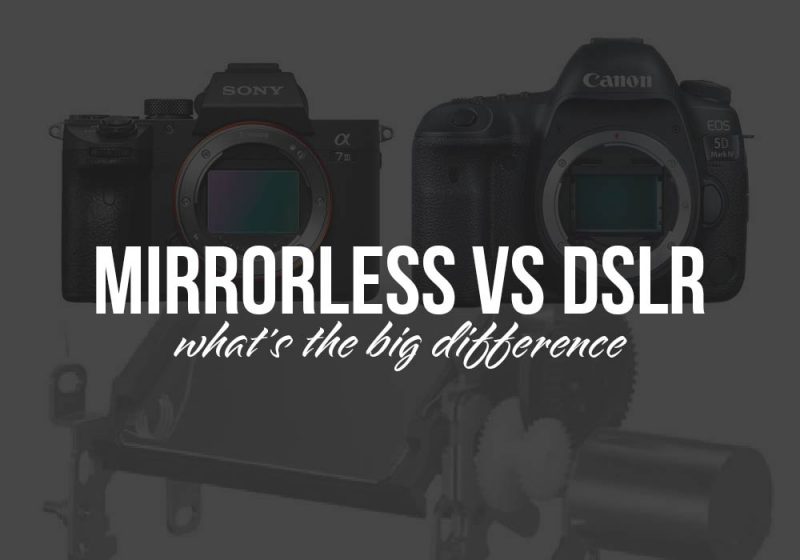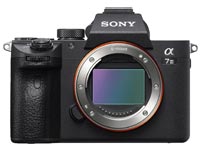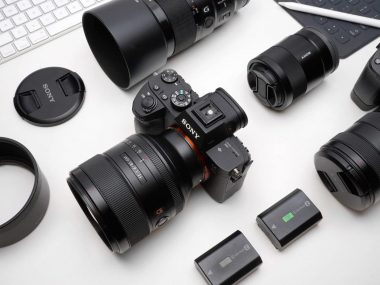It wasn’t that long ago that DSLR or digital single-lens reflex cameras were the popular choices and the only choice besides film cameras.
Then the introduction of mirrorless cameras changed everything. Many people still think mirrorless cameras are the same as DSLR cameras, but there are some subtle differences that make each system stand on its own.
DSLR vs Mirrorless Cameras
While the debate about which of these cameras is better will always be subjective, the truth is that they both offer pros and cons you should consider before buying one.
Mirrorless cameras have become the choice for many professional or picky photographers. This doesn’t mean that DSLR cameras aren’t just as good in many areas.
Once you consider which features are most important to you, making the right decision becomes a little easier.
If you’ve decided to go more in-depth and need additional information on the differences between these two camera types, not to worry because below, we can learn together.
Let’s review a few major differences between a DSLR and a mirrorless camera that can help you make this important decision.
What’s the difference
Truth be told, the technology is similar, but many improvements have been made in the technology.
Both cameras also allow you to swap out your accessories and even your lenses, which is why they are both such versatile and high-quality cameras.
Both camera types take excellent pictures and are fairly easy to operate, but there some notable differences in the cameras.
Let’s review these differences and help you decide which is right for you.
Mirrors and reflectors
The mirror is, of course, the main difference between a DSLR and a mirrorless camera.
With a DSLR, a mirror is built into the camera’s body, where it then reflects the image onto an optical viewfinder.
By contrast, a mirrorless camera uses an electronic rather than an optical viewfinder.
This means that the image isn’t reflected directly onto the viewfinder, but instead, it goes right to the sensor and doesn’t need any flip-up mirror.
In essence, DSLR cameras operate much like 35 mm film cameras, but instead of film, there is an image sensor.
There is also a mirror, which flips up when you press the shutter button, and the light hits the sensor; the final image is captured.
With a mirrorless camera, light passes through the lens and onto the image sensor, capturing a preview of your image, where it is displayed on the rear screen.
This action is very similar to what happens when you use a smartphone camera.
Recap:
- DSLR cameras use flip-up mirrors or reflectors that reflect the image onto the sensor
- Mirrorless cameras use the light entering from the lens that gets recorded directly to the sensor. No mirror or reflector was used.
Battery Life
While the electronic viewfinders found in mirrorless cameras can be convenient and certainly produce great photos, they also drain a battery’s power a lot faster.
For instance, when you’re using a DSLR camera, you can usually get 1,000 to 2,000 shots per battery charge, depending on your camera.
By contrast, mirrorless cameras provide only around 300 to 400 shots per battery charge.
That’s a big difference when it comes to the life of your battery, and it makes an even bigger difference when you’re on the go.
You might find yourself in places so remote that you don’t always have a way to charge your batteries, so extra ones are needed.
For some photographers, this isn’t a problem because they can carry multiple batteries, but this does add more weight to your camera bag for longer shoots.
This is a factor you definitely want to take into consideration.
Recap:
- DSLR cameras have a longer battery life than mirrorless cameras
- Mirrorless cameras will require more batteries to operate the camera consistently.
- Batteries will average around $60-$80 for each system
Size and Weight
The size and weight of your camera can make a big difference if you use it for extended periods of time.
There are some big weight and size differences between a DSLR camera and a mirrorless camera.
In this area, a mirrorless camera usually wins out over a DSLR camera.
Why? For one thing, DSLR camera bodies are bigger than mirrorless camera bodies, mostly because they have to house a mirror and an optical viewfinder mechanism in the body.
Some DSLR cameras can weigh as much as 1.5 pounds or more and be around 3 inches deep.
With mirrorless cameras, you usually get both a smaller camera and one with the construction that is a little less complicated and less overall weight.
While some mirrorless cameras can come close to DSLR sizes, they are generally smaller and lighter.
For example, here are full-frame samples from Sony and Canon:
- Sony a7iii – 1.43 lbs (mirrorless)
- Canon 5D IV – 1.96 lbs (DSLR)
- Sony a9 – 1.48 lbs (mirrorless)
- Canon 1D – 2.95 lbs (DSLR)
In fact, many mirrorless cameras are so compact and lightweight that they will fit into your pocket, which is a big deal to a lot of photographers.
Recap:
- Mirrorless cameras are smaller and lighter weight
- Mirrorless cameras are compact and can fit in your pockets depending on the lens
- DSLR cameras can be heavier and larger in body size
Noise Levels
With a flip-up mirror, a DSLR camera can be louder when shooting photographs. This is subjective and will differ in preferences among photographers.
In a large area populated with many people, that might not matter, but it can make a big difference in other situations.
Mirrorless cameras can be quieter when you’re taking pictures. The Sony a7 series offers silent shooting mode, so you don’t hear a shutter sound.
So if you’re trying to get a close-up or intimate shot at a wedding, and shots absolutely have to be silent, you’ll most likely choose a mirrorless camera instead of a DSLR.
Not only are they quieter because there is no pop-up mirror with a mirrorless camera, but these cameras also produce much fewer vibrations, making them even quieter in the end.
Documentary photographers especially will love this feature.
Recap:
- DSLR cameras do use a mirror and will have a shutter sound.
- Some Mirrorless cameras can shoot in silent mode with no shutter sounds.
Frames per second
One of the last major differences between DSLR and mirrorless cameras is the number of frames your camera can catch consecutively per second.
This can be called the FPS or Frames Per Second. This is also referred to as burst speed. Here are a few examples below.
- Sony a7iii – 10 frames per second (mirrorless)
- Canon 5D IV – 7 frames per second (DSLR)
- Sony a9 – 20 frames per second (mirrorless)
- Canon 1D – 12 frames per second (DSLR)
Keep in mind DSLR cameras have to physically move a mirror to capture the image. Mirrorless cameras do not. This allows a mirrorless camera to capture more images per second, and this can be crucial if you’re capturing fast-moving subjects.
Recap:
- Mirrorless cameras can shoot faster frames per second
So which one is right for portraits
For portrait photography, there is no right answer. Both camera types can capture great images in high-quality formats. It’s just personal preference.
I know photographers who use both DSLR and mirrorless cameras. Many are making the switch to mirrorless due to the camera setup’s smaller sizes and lighter weight.
Major camera manufacturers now offer mirrorless options
Camera brands like Sony, Canon, Nikon, and Fuji are now offering mirrorless camera opinions. This could not be said 2-3 years ago.
Many people see the potential of mirrorless cameras not just for photography but also for video production.
Some mirrorless cameras to consider:
- Sony a7iii or Sony a9ii
- Canon R5 or Canon R6
- Nikon Z6 or Nikon Z7
What do I shoot with
I currently shoot with the Sony mirrorless camera system. My main cameras are the Sony a7riii and Sony a7iii mirrorless cameras. I like shooting with this platform due to it’s size and lens selection.

For clarity I tried using the Canon 5D Mark I system when I started, but I just didn’t like the feel of the DSLR camera in my hands.
Final Thoughts
Like all camera systems, there will be pros and cons to the capture process. No camera is perfect, but hopefully, you will find a camera that will fit your shooting style.
If you’re not sure, then rent a few different cameras before committing to a specific system. This will help you learn each system and get used to the limitations of each.
I prefer and recommend mirrorless cameras for the ease of use, lighter size and weight, and faster shooting that I can take advantage of. No matter what style of camera you buy, just go out and enjoy shooting!
*Affiliate Disclaimer - I am a proud partner of the various affiliate programs including the Amazon.com Affiliate Program. When you click on my links and make a purchase I make a commision which goes to helping me support this blog. Thanks! |





